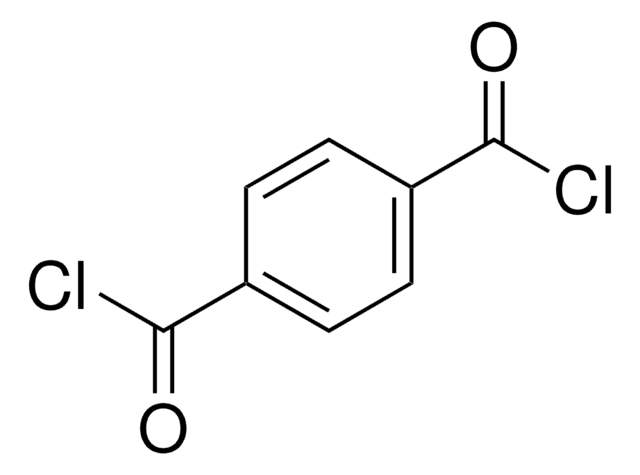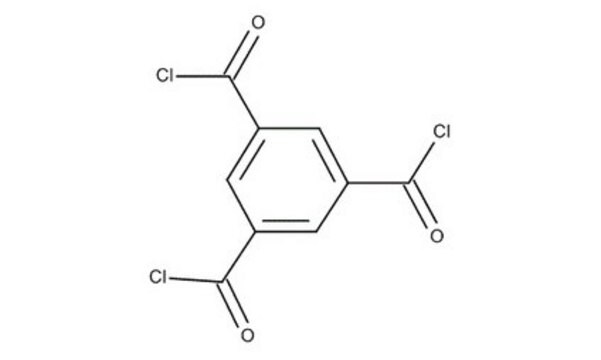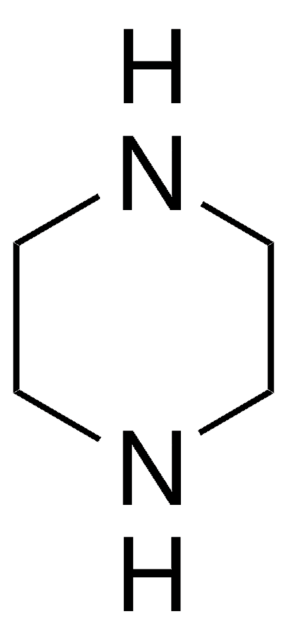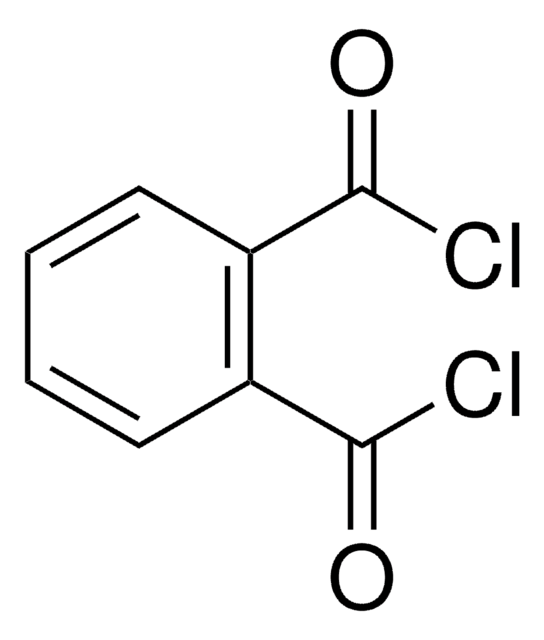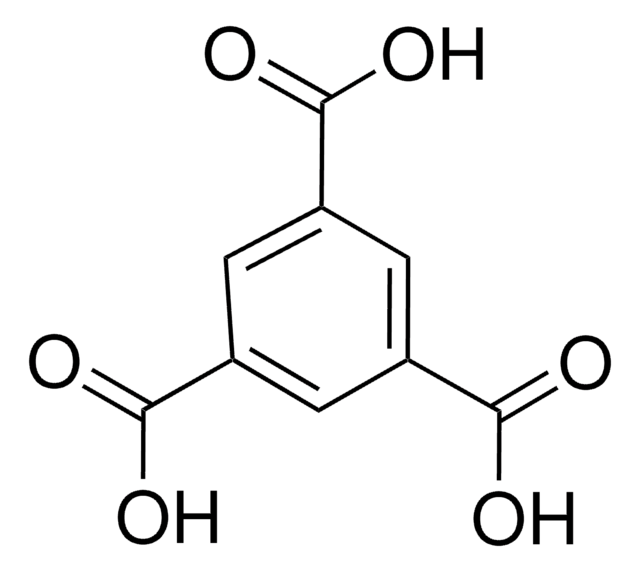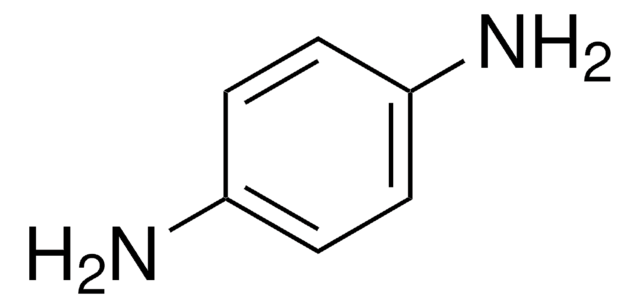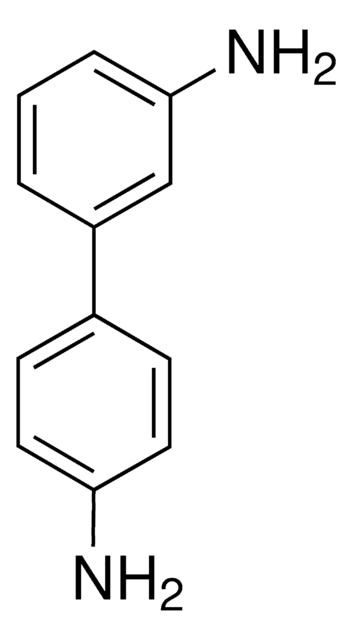Key Documents
147532
1,3,5-Benzenetricarbonyl trichloride
98%
Synonim(y):
Benzene-1,3,5-tricarbonyl chloride, Trimesic acid trichloride, Trimesoyl chloride
About This Item
Polecane produkty
Poziom jakości
Próba
98%
Postać
solid
tw
180 °C/16 mmHg (lit.)
mp
32-38 °C (lit.)
rozpuszczalność
chloroform: soluble 10%, clear to very slightly hazy, colorless to faintly yellow
gęstość
1.487 g/mL at 25 °C (lit.)
ciąg SMILES
ClC(=O)c1cc(cc(c1)C(Cl)=O)C(Cl)=O
InChI
1S/C9H3Cl3O3/c10-7(13)4-1-5(8(11)14)3-6(2-4)9(12)15/h1-3H
Klucz InChI
UWCPYKQBIPYOLX-UHFFFAOYSA-N
Szukasz podobnych produktów? Odwiedź Przewodnik dotyczący porównywania produktów
Opis ogólny
Zastosowanie
Hasło ostrzegawcze
Danger
Zwroty wskazujące rodzaj zagrożenia
Zwroty wskazujące środki ostrożności
Klasyfikacja zagrożeń
Eye Dam. 1 - Skin Corr. 1B - Skin Sens. 1
Kod klasy składowania
8A - Combustible corrosive hazardous materials
Klasa zagrożenia wodnego (WGK)
WGK 3
Temperatura zapłonu (°F)
230.0 °F - closed cup
Temperatura zapłonu (°C)
110 °C - closed cup
Środki ochrony indywidualnej
Eyeshields, Faceshields, Gloves, type P3 (EN 143) respirator cartridges
Wybierz jedną z najnowszych wersji:
Masz już ten produkt?
Dokumenty związane z niedawno zakupionymi produktami zostały zamieszczone w Bibliotece dokumentów.
Klienci oglądali również te produkty
Nasz zespół naukowców ma doświadczenie we wszystkich obszarach badań, w tym w naukach przyrodniczych, materiałoznawstwie, syntezie chemicznej, chromatografii, analityce i wielu innych dziedzinach.
Skontaktuj się z zespołem ds. pomocy technicznej